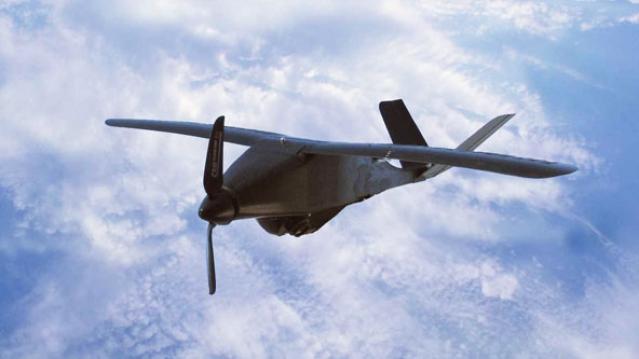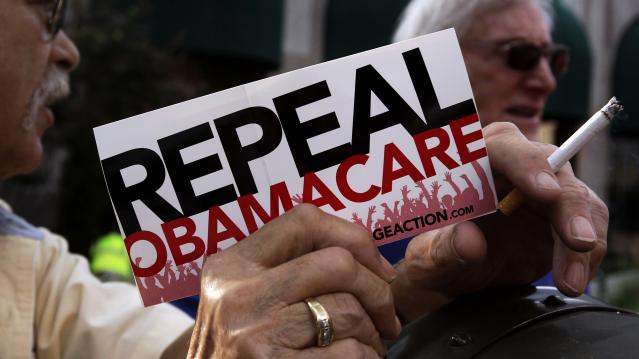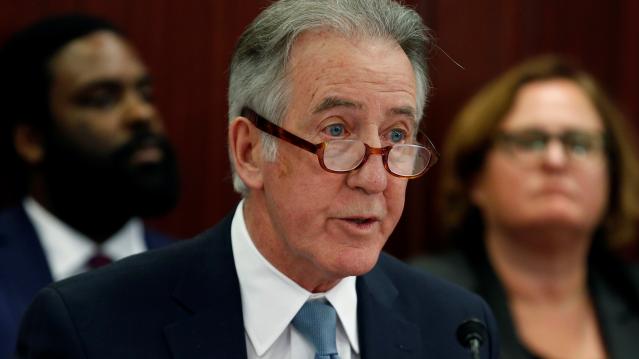Undertrained US Drone Pilots Put War Effort at Risk

The U.S. military is allowing pilots who haven’t fully completed their training to fly predator drones over Yemen and Pakistan—potentially putting innocent people on the ground at risk if something goes wrong.
An alarming new report by the Government Accountability Office found that drone pilots in the Army and Air Force have been skimping on their training sessions in order to get assigned to missions faster.
Related: Who Knew the Navy Could Launch 30 Drones in 60 Seconds?
The GAO said that because there is a shortage of drone pilots, the Air Force and Army have been routinely speeding up the process by cutting training time.
“As a result, the Army does not know the full extent to which pilots have been trained and are therefore ready to be deployed,” the report said.
The GAO reviewed Air Force records and found that only 35 percent of pilots operating drones had completed their required training.
Some pilots told the auditors that training wasn’t completed because there was a lack of funding or gaps in knowledge about the unmanned aerial systems (UAS) commonly called drones.
“Army UAS pilots stated that leadership of larger non-aviation units that oversee their UAS units do not understand UAS pilot training,” the report said.
The GAO had previously reported that there weren’t enough drone pilots compared with the number the Air Force said it needed. At New Mexico’s Holloman Air Force Base, for example, drone pilot staffing was at only 63 percent of full staffing level, the report said.
The latest findings from the GAO seem to confirm that this is still an issue.
Related: The Duck Drone That Could Change the Navy
The U.S. military says it is taking action to increase the number of instructors in order to get more pilots through the complete training process. However, the GAO said that the Army hasn’t fully addressed “the risks associated with using less experienced instructors.”
The Army waived course prerequisites for nearly 40 percent of its drone pilots who were working toward becoming instructors.
“As a result, the Army risks that its UAS pilots may not be receiving the highest caliber of training needed to prepare them to successfully perform UAS missions,” the auditors said.
Meanwhile the Air Force faces instructor shortages as well.
The report calls into question whether a lack of training could hamper drone pilots’ ability to successfully and safely complete their missions. It comes amid intense scrutiny of the government’s drone program after a botched mission in January killed two Western hostages during an attack on al Qaeda in Pakistan.
Scrutiny of the program is nothing new. Human rights activists have long called on the administration to cease using drones in its ongoing war on terror because of civilian casualties.
A 2013 report by Human Rights Watch said that between 2009 and 2013, U.S. drone strikes killed 57 civilians in six different strikes in Yemen. Last year the Yemeni government paid $1 million to families of victims of one of those strikes, which targeted a wedding and killed 11 people.
Maybe Don’t Count Out Obamacare Repeal Just Yet

Sen. Bill Cassidy (R-LA) told reporters on Friday that he’s getting close to securing enough votes to pass the last-ditch ACA repeal and replacement bill he’s put forth with Sens. Lindsey Graham (R-SC), Dean Heller (R-NV) and Ron Johnson (R-WI).
“I am pretty confident we’ll get there on the Republican side,” Cassidy said. “We’re probably at 48-49 [votes] and talking to two or three more.” And Senate Majority Leader Mitch McConnell has asked the Congressional Budget Office to estimate the effects of the Cassidy-Graham bill, which would speed up the scoring process.
Of course, those last two or three votes have been the challenge for the GOP all along, and they may not be any easier to round up this time. Sen. Rand Paul (R-KY), who voted for a prior repeal bill, said Friday that he won't support this one. Plus, opponents are already stepping up their criticisms about the effects of the bill. And time is running out: Cassidy and his colleagues only have until September 30 to pass the bill this year under a process that would require only 50 supporters in the Senate. So while the Obamacare repeal may still have life, it remains a longshot.
Orrin Hatch Signals Just How Complicated Tax Reform Will Be

GOP leaders said Wednesday that they'd issue a more detailed framework of their tax overhaul the week of September 25. But while lawmakers are eager to get more details about the outline being hashed out by the so-called Big Six team of negotiators, Republicans are still divided on key elements of the plan — going from blueprint to bill is bound to be a contentious process.
In his opening remarks at a Senate Finance Committee hearing today on individual tax reform, Sen. Orrin Hatch (R-UT) said the plan from the Big Six — of which he is one — "will not dictate the direction" the tax-writing committee takes. "Anyone with any experience with the Senate Finance Committee knows that we are not anyone’s rubber stamp," he said. "If a bill – particularly on something as consequential as tax reform – is going to pass in this committee, the members of the committee will have to be involved in putting it together."
Oh, and remember: Republicans also need to agree on a budget before they can push through tax reform without Democratic votes.
Aging Baby Boomers Drive Down the Uninsured Rate
About 10,000 boomers turn 65 every day, becoming eligible for Medicare on their birthdays. The Census Bureau says that the sheer number of boomers entering Medicare is affecting the uninsured rate for the whole population. That rate fell to 8.8 percent in 2016, down from 9.1 percent a year earlier, with most of the decline driven by the aging of the post-war generation. (Wall Street Journal)
Social Security Kept 26.1 Million Out of Poverty Last Year
Social Security kept more than 26 million people out of poverty last year, according to a new report from the Census Bureau. Refundable tax credits such as the one for earned income kept 8.2 million people out of poverty, while food stamps lifted 3.6 million above the line, housing subsidies reduced the number of poor people by 3.1 million and unemployment insurance kept 680,000 out of poverty. Overall, the Census Bureau reported, the poverty rate was 12.7 percent, while a more sophisticated alternative measure that factors in government programs for low-income families put the rate at 13.9 percent, down from 14.5 percent in 2015.
Read more about the new Census Bureau numbers here.
Tax Reform on Menu for Trump's Dinner with Dems
President Trump is set to host three moderate Democratic senators for dinner on Tuesday as part of his push for tax reform, Politico reports. The Democrats on the guest list: Sens. Joe Manchin of West Virginia, Heidi Heitkamp of North Dakota and Joe Donnelly of Indiana, all of whom are up for reelection in 2018 in states Trump won last November. Vice President Mike Pence and GOP Sens. Orrin Hatch of Utah, John Thune of South Dakota and Pat Toomey of Pennsylvania are also slated to attend.
